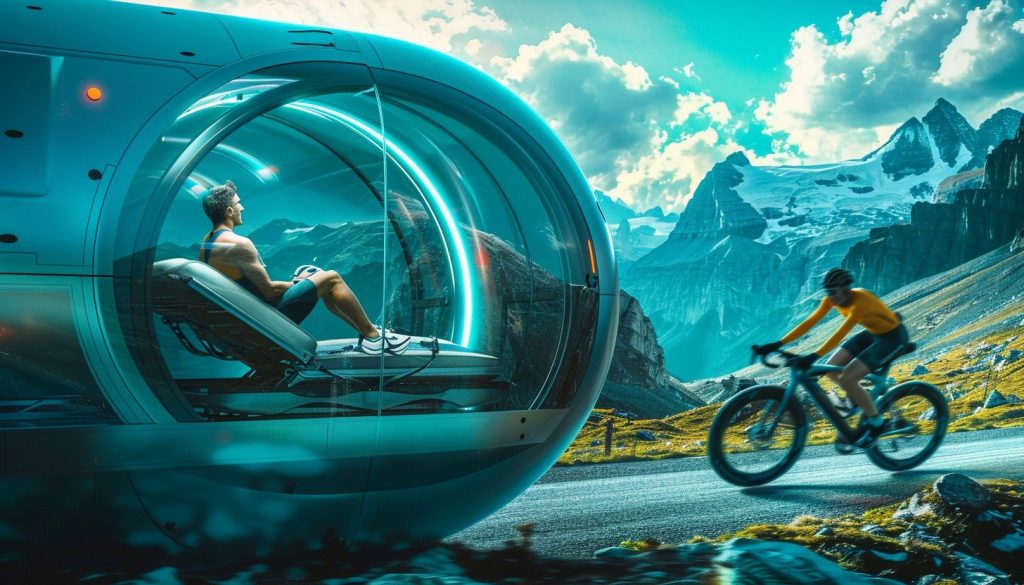As of this year, Italian athletes can also use hypoxic or hypobaric tents, until last season considered to be on par with a doping practice.

Dropping a historic ban included in the Criminal Anti-Doping Law 376/2000, the communication sent by the Italian Ministry of Health to the Medical Sports Federation and all sports federations in late November said: “With reference to the latest ministerial decree containing the list of doping active ingredients and methods dated Oct. 23, 2023, which reads “The use of the hypobaric chamber is not prohibited; the athlete who resorts to this practice must remain under strict control of the sports physician both before and after the use of the hypobaric chamber,” it is represented that this indication stems from an in-depth scientific-bibliographical study carried out by the Consiglio Superiore di Sanità, which expressed itself at the request of the Section for Supervision and Control on Doping of the Technical Health Committee, to provide a scientific-technical opinion on the possibility of using the hypobaric chamber for sports use. This method was prohibited, contrary to what the Wada (World Anti-Doping Agency) had already stipulated. In order to align the treatment of Italian athletes with foreign athletes, the Doping Control Section decided to proceed with the above request.”
Well, now that Italian athletes can prepare like opponents of other nationalities by taking advantage of this tool there is a need to understand what it is for and how it should be used. “Although the investment is not small, there has been a boom in inquiries regarding the purchase of tents that allow in the comfort of one’s own home to simulate altitude. There are numerous models (including portable ones), which connected to a compressor progressively reduce the amount of oxygen available, as if the athlete were sleeping at high altitude: in this way, the body is obliged to naturally produce more red blood cells, and therefore there will be a greater amount of oxygen available to the muscles for the sporting effort,” explains Andrea Morelli, head of the Movement Analysis Laboratory and technical coordinator of the cycling section of the Mapei Sport Research Center in Olgiate Olona (Varese, Italy).
“Simulating altitude or being at altitude, however, is not the same thing. At altitude the percentage of oxygen in the air is the same as at sea level, what changes is the partial pressure of oxygen so at the lung level the ability to exchange oxygen and bind it with hemoglobin and then be transported to the blood stream; in a hypoxic tent, on the other hand, a dilution takes place therefore a decrease in the percentage of oxygen to try to reproduce what happens at altitude,” continues the trainer, reference as far as cycling is concerned to the Varese center that many professionals rely on, individually and as scientific and technical referent of some teams, as in the case of Lidl-Trek of Elisa Longo Borghini, Jonathan Milan, Elisa Balsamo and Giulio Ciccone.
“The first studies, carried out in the mid-to-late 1990s by Swedish and Finnish researchers seemed very promising in that they presented high gains in terms of serum erythropoietin, red blood cells and hemoglobin; however, these results were scaled down by the in-depth studies carried out by Australian colleagues in the early 2000s who demonstrated the effectiveness of this technique with lower gain percentages and only with a stay of at least 8 to 18 hours a day, for a period of at least 3 weeks simulating an altitude of about 3.000 meters.”
For Morelli the investment is not worth it, better to have a training camp in a nice mountain resort with your teammates, especially since during a retreat what makes the difference anyway is the training volume (hours) and the total elevation gain in uphill work. In any case, if you opt to use a hypoxic tent you have to have the right precautions. “For a professional athlete I personally prefer training at altitude, to the amateur I recommend working on other aspects, first of all training. Often the distribution of weekly work and the periodization followed are wrong; take care of the position on the bike, follow a personalized diet both on and off the bike, then think about these “marginal gains”. However, by following the scientific guidelines of the “living high and training low” protocol, it is possible to try to maintain even at home, taking advantage of the effects of the hypoxic curtain, the training intensity as if you were at sea level, but it will be necessary to adjust the training volume because by sleeping “at altitude” and therefore with less oxygen available, recovery times are lengthened” concludes the expert.
Dr. Claudio Pecci, health manager of the Mapei Sport Center and a specialist in sports medicine, former doctor of the Italian national cycling team at the World Championships and Olympics, adds, “Any external intervention outside of well-planned training should always be seen as a “forcing” on the organism. Let us always remember that each individual has its own organic, metabolic and functional peculiarities and therefore any ‘stimulating’ intervention can have different reactions. Some practices may even be allowed but when going beyond therapeutic needs always leave some doubts from an ethical point of view. As always, the remote effects (and consequences) of borderline practices to this day are not entirely predictable, so if you adopt them you must always do it with caution”.